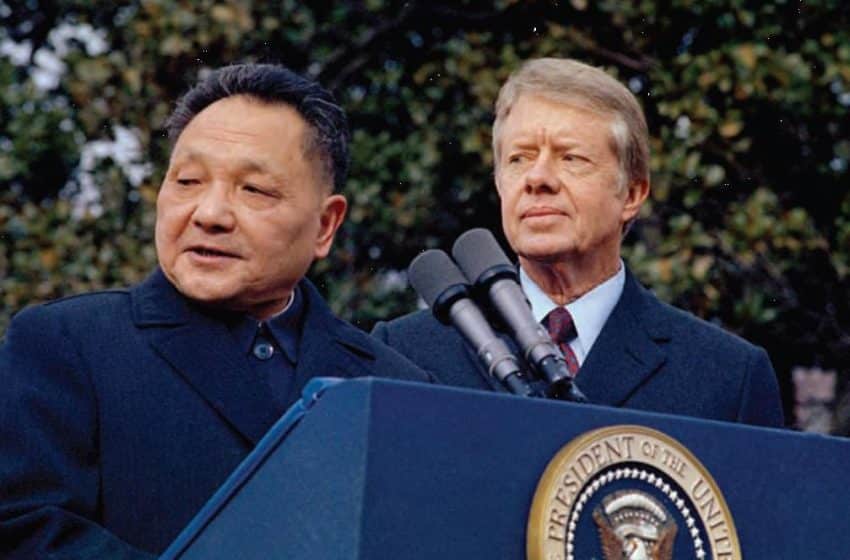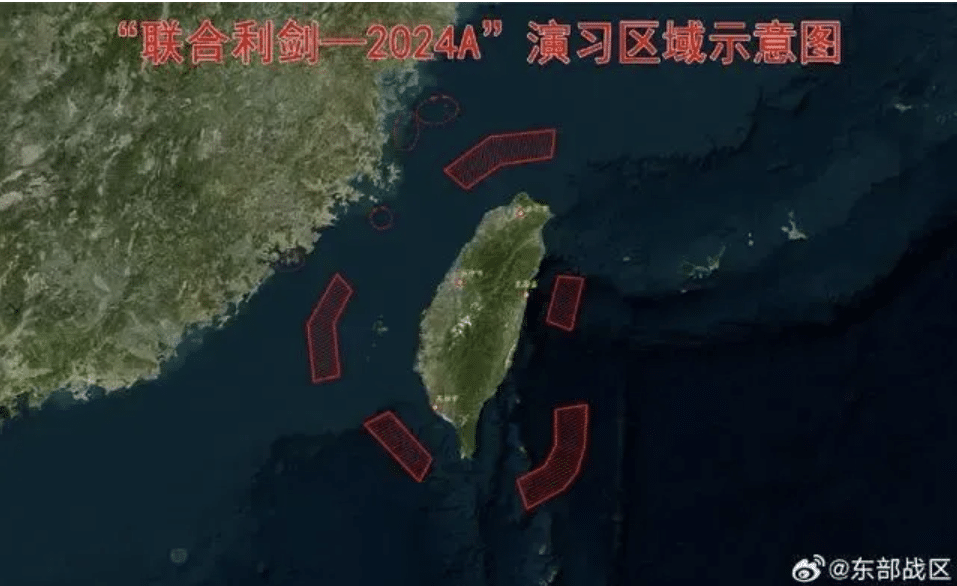Swapping Tariffs for Trade Deals?
By Rob La Terza
Trade talks on October 10th and 11th surpassed expectations, as President Donald Trump announced that the U.S. and China had reached a “substantial phase-one deal” on Friday [1]. This deal will delay a tariff increase on a wide range of products from seafood to nuclear reactors (for a full list, see Business Insider) that would have taken place on October 15. The deal also includes unknown provisions for the protection of U.S. intellectual property and a Chinese commitment to buy U.S. agricultural products valued at up to $50 billion. The embattled Chinese technology company Huawei will find no relief from this deal, as the U.S. made no alteration to its purchase restrictions on the company [1].
President Trump says that this is a “phase one” deal that will take “around three weeks to write.” [1] After this deal is signed, negotiators will immediately start working toward a phase two deal. Early coverage by analysts concludes that Trump changed his tune based on increasing discontent from the farming and manufacturing sectors. Economics professor at Rutgers University and research associate at the National Bureau of Economic Research Thomas Prusa said that “Trade wars are not easy to win and he’s hearing a lot from companies about how much the tariffs are hurting.” [1]. Prusa continued to say that companies had grown weary of uncertainty as the administration escalated the trade war and that they would continue to place pressure on Trump if a deal were not reached. [1]
Chinese negotiators indicated at the beginning of this round of talks that the global trend of slowing economic growth influenced Beijing’s thinking, prompting it to seek a deal. Both Chinese and U.S. manufacturing have decreased as a result of the trade conflict, as well as experiencing other economic pressures. [1]
On October 14th, however, China provided reasons for observers to view Friday’s announcement with caution. Bloomberg reported that China is not yet ready to sign on to Trump’s “phase one” deal and will want additional negotiations before signing a formal agreement. [2] On a positive note, China appears to want those negotiations to come quickly. Vice Premier Liu He may be sent back to the U.S. for a second round of negotiations on the deal this month so Presidents Trump and Xi can sign a completed deal at the Asia-Pacific Economic Cooperation Summit taking place in Chile this November [2]. A key issue China must address is the October 11 deal’s failure to delay or cancel the tariff hikes scheduled for December 15 [2]. The December tariffs include finished consumer products, a category encompassing diverse goods such as electronics, appliances, and apparel (for an outline of the products included in the December tariffs, see Forbes). Vice Chairman of the China Society for World Trade Organization studies Huo Jianguo said, “The U.S. must concede on its December tariff threat if they want sign a deal during APEC summit, otherwise it would be a humiliating treaty for China. The U.S. has definitely shown some good gestures, but we shouldn’t exclude the possibility of another flip-flop.” [2]. Beyond the tariffs, China may want the U.S. to make some concessions on Huawei before signing an agreement. Bloomberg also reports that Xi faces pressure from nationalist elements in the CCP, who fear that the October 11 trade deal would be an “unequal treaty” like those China was forced to sign during the so-called century of humiliation.
Another sticking point is that convincing China to follow through on its pledge to buy $40-$50 billion worth of U.S. agricultural goods may not be as simple as it sounds. Agricultural trade experts consulted by Reuters warned that the massive purchasing increase called for in the deal is impossible unless existing trade disputes are resolved in a more comprehensive deal than Trump’s “phase one” agreement [3]. To fulfill its obligation to the U.S., China would have to reduce its soybean imports from other nations and/or change its meat safety policies to allow imports of U.S. beef containing hormones and drug residues [3]. Darin Friedrichs, senior Asia commodity analyst at the Shanghai brokerage INTL FCStone, dismissed the $50 billion number, saying “I think it’s a meaningless big number, thrown out to get headlines, and won’t happen.” [3].
Chinese media coverage of the trade deal has largely reflected caution. The CCP publication People’s Daily wrote that “People believe that only by removing all the levied tariffs to seek a true trade war truce, taking constructive moves to seek trade balance and seeking a ‘maximum common divisor’ for common interests, can trade and economic problems be resolved. But of course, the final outcome will depend on whether the U.S. can walk together with China, and create the necessary and sufficient conditions to push ahead.” [4]. The blog Taoran Notes, which is run by the state-sponsored Economic Daily, wrote that “merely saying optimistic or pessimistic is not enough to depict the current, complicated situation.” [4]. The South China Morning Post summarized Taoran’s article as cautioning readers against being “overly optimistic” and writing, “The economic and trade frictions between Beijing and Washington have not fundamentally improved as the U.S. had not removed its tariffs on Chinese goods and China’s countermeasures were still in place.” [4]. Taoran also warned that American China hawks could throw a wrench in any deal making process [4]. Notably, Taoran pessimistically wrote that “‘Talking while fighting’ could become the norm, and we should adapt to the norm as soon as possible.” [4]. Hu Xijin, editor of the Global Times, noted that the Chinese government has been cautious about raising the public’s hopes for an end to the trade conflict, saying, “The official reports didn’t mention that President Trump hopes to sign the deal next month. This shows Beijing is concerned about the remaining uncertainty and doesn’t want to raise the public’s expectations.” [4]. Hu said that the Chinese people do not trust the Trump administration to adhere to a deal, nor do they expect significant progress in trade negotiations [4].
Talks are expected to continue next week, with Treasury Secretary Steve Mnuchin saying on October 14 that he and U.S. Trade Representative Robert Lighthizer will continue their negotiations with Vice Premier Liu He [5]. Mnuchin said in an interview with CNBC that the U.S. will impose the December 15 tariffs as scheduled if the U.S. and China fail to reach an agreement. However, Mnuchin expressed optimism, saying, “I expect we’ll have a deal.” [5].
Although the October 11 trade talks were more fruitful than most observers had hoped before the negotiations began, Chinese coverage of the deal shows that a comprehensive trade agreement is still a hope rather than a certainty. While this deal is a good start, there is no guarantee that it will result in a comprehensive trade deal or address the mistrust between the two sides. That mistrust is ominous as if neither side trusts the other, a deal may not be possible. Taoran Notes’ and Hu Xijin’s commentaries serve as indicators that China may not trust the U.S. enough to sign a deal. It is currently unclear whether this mistrust is endemic to the Trump administration or if it will extend into China’s dealings with the next U.S. president, whenever that occurs. As of now a trade deal is still possible, depending on what changes China would like the U.S. to agree to. If China’s only demand is that the U.S. cancels its scheduled December tariffs on finished consumer goods, the two sides are likely to reach a mutually satisfactory agreement. If China would like the U.S. to make significant concessions on Huawei, the negotiations could stretch out far longer or be derailed altogether, thus delaying a trade deal indefinitely.
On October 16, China changed its messaging to more closely match the U.S.’ positivity. While China had previously shied away from referring to the understanding reached at last week’s trade talks as an agreement, a Chinese Foreign Ministry spokesman said that Trump’s statements were correct, adding, “and it is the same with our understanding on this agreement.” [6]. The prospects for follow-up trade talks are uncertain, as the U.S. House of Representatives passed the Hong Kong Human Rights and Democracy Act on October 15. Beijing has condemned the bill through government and media outlets. Foreign Ministry spokesman Geng Shuang warned that, “With regards to the incorrect decision by the U.S., China must take strong countermeasures to firmly safeguard its sovereignty, security and developmental interests.” [7] Geng stated, “If the relevant bill is ultimately passed into law, not only will it harm Chinese interests but it will damage China-U.S. relations and seriously damage the U.S.’ own interests.” [7].
White House Trade Adviser Peter Navarro kept up the U.S.’ positive messaging on October 18, saying in reference to Presidents Trump and Xi, “We’re on the glide path to Chile and the meeting of the two presidents mid-November. And the plan there is to have an agreement, so we’ll see what happens.” [8]. So far, the U.S. has not expressed concern or offered to make any concessions over China’s threats of “retaliation” against the Hong Kong Human Rights and Democracy Act.
Rob La Terza is an intern in The Carter Center’s China Program. The views expressed in this article are those of the author and do not necessarily represent those of The Carter Center.
References:
1. Robert Delaney, Mark Magnier, Owen Churchill, and Lee Jeong-ho. “Donald Trump says ‘substantial phase-one deal’ reached in China trade talks, new tariffs delayed.” South China Morning Post, October 11, 2019. https://www.scmp.canom/news/china/politics/article/3032620/donald-trump-says-good-things-are-happening-china-trade-talks
2. Bloomberg News. “China Wants More Talks Before Signing Trade Deal With Trump.” Bloomberg.com. Bloomberg, October 14, 2019. https://www.bloomberg.com/news/articles/2019-10-14/china-wants-more-talks-before-signing-trump-s-phase-one-deal
3. Dominque Patton. “Trump’s hailing of $50 billion in Chinese farm purchases seen as ‘meaningless.’” Reuters, October 14, 2019. https://www.reuters.com/article/U.S.-usa-trade-china-agriculture/trumps-hailing-of-50-billion-in-chinese-farm-purchases-seen-as-meaningless-idUSKBN1WT0TG
4. Wendy Wu. “Beijing warns of more uncertainty in trade war negotiations despite ‘constructive’ talks in Washington.” South China Morning Post, October 12, 2019. https://www.scmp.com/news/china/diplomacy/article/3032639/beijing-warns-more-uncertainty-trade-war-negotiations-despite
5. Robert Schroeder. “Mnuchin says he and Lighthizer will speak to China’s Liu next week on trade deal.” MarketWatch, October 14, 2019. https://www.marketwatch.com/story/mnuchin-says-he-and-lighthizer-will-speak-to-chinas-liu-next-week-on-trade-deal-2019-10-14
6. Adam Behsudi. “China Agrees There Was a Starter Agreement.” POLITICO, October 16, 2019. https://www.politico.com/newsletters/morning-trade/2019/10/16/china-agrees-there-was-a-starter-agreement-780586
7. SCMP Reporters. “China Warns U.S. It Will Take ‘Countermeasures’ over Hong Kong Bill.” South China Morning Post, October 16, 2019. https://www.scmp.com/news/china/diplomacy/article/3033266/china-warns-countermeasures-over-U.S.-bill-supporting-hong-kong
8. Susan Heavey, Jan Wolfe, and Alex Richardson. “White House’s Navarro points to November for U.S.-China phase one deal.” Reuters, October 18, 2019. https://www.reuters.com/article/U.S.-usa-trade-china-navarro/white-houses-navarro-points-to-november-for-u-s-china-phase-one-deal-idUSKBN1WX1IU








